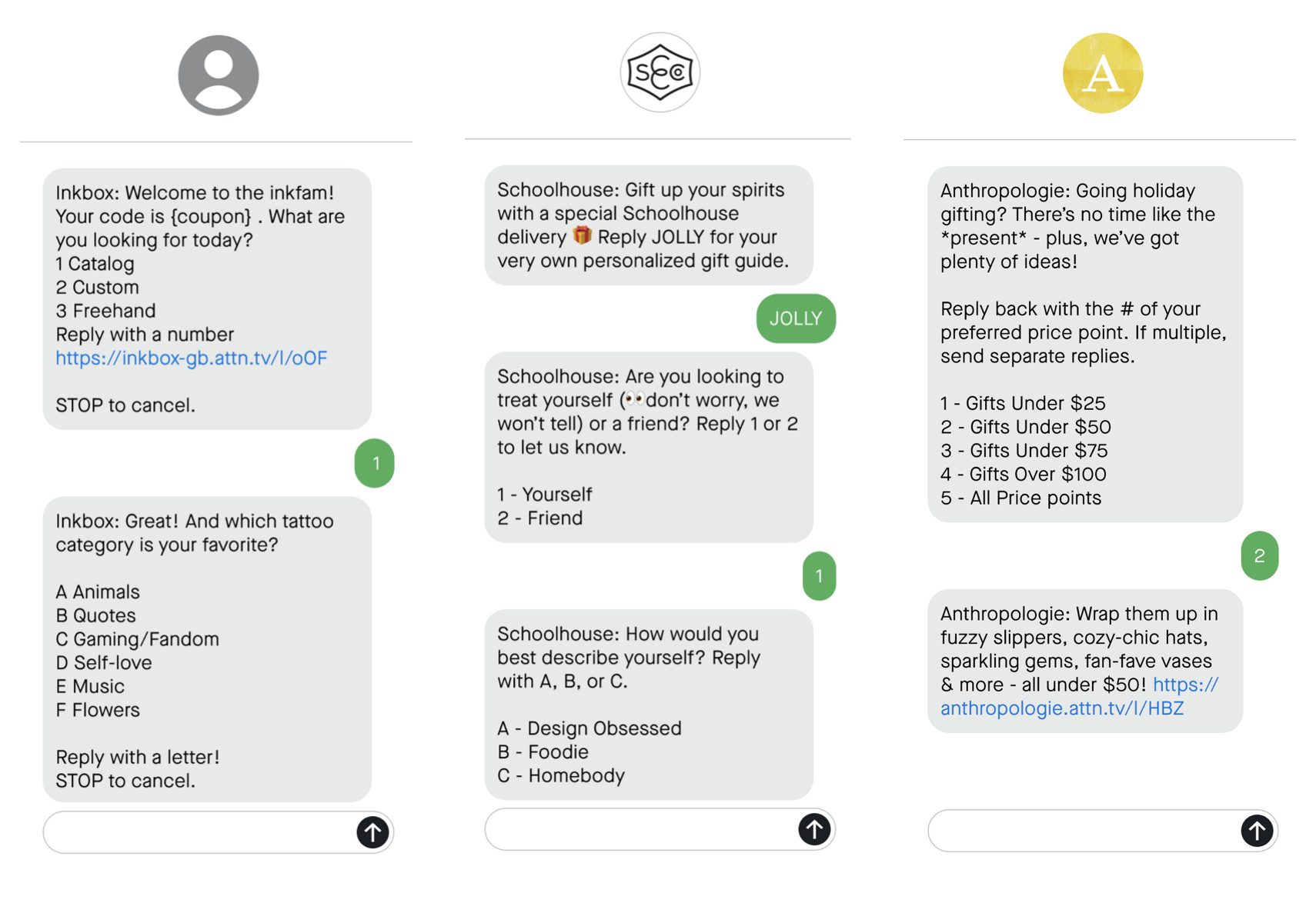Automating text conversations to drive subscriber engagement
tl;dr
🚩 Problem:
We saw an opportunity for our customers to have text conversations with their subscribers for increased engagement, but they lacked the bandwidth to support real-time conversations.
🧪 Solution:
A guided, automated system that enabled customers to ask timely questions and gather replies, driving increased engagement throughout their subscriber’s journeys.
🥇 Results:
For clients using conversation-driven targeting, we saw a 23% increase in clickthrough rates and a 6% lift in revenue compared to less targeted, generic campaign messages.
👀 My behavior:
Prioritized opportunities from a survey of 400 customers
Conducted a competitor feature audit to inform product and feature direction
Facilitated a "How Might We" workshop with cross-functional partners
Led customer interviews to refine design direction and uncover blind spots
Ran an affinity mapping session to prioritize must-haves vs. nice-to-haves
Led scrappy usability sessions to validate readiness for launch and promotion
At Attentive, I led design for the Journeys tool — empowering customers to build sophisticated, behavior-driven text messaging flows. By using subscriber behavior and targeting rules, the tool helped deliver timely, relevant information, driving deeper engagement and stronger outcomes.
01 Defining the opportunity
Our team was approached by the founder to demonstrate how a conversational product could boost client revenue.
We first began by reviewing data from a recent survey sent to 400 customers. Key insights included:
High interest in use cases driving to a purchase, but unsure where to start
Most clients needed automation due to limited bandwidth for human agents
I conducted a competitive gap analysis, revealing that while competitors had added self-service conversational products in the last year, their features were still limited.
02 Ideating and testing
I led two workshops with PMs, Engineers, Customer Success Managers, Product Marketing Managers, and Designers to brainstorm solutions for quickly testing conversational use cases with minimal customer resources.
An interesting debate emerged between using automation or hiring internal human agents. After a confidence, impact, and risk exercise, we concluded that while human agents would likely drive higher revenue, automation would offer quicker insights on valuable use cases with fewer dependencies. This led to quick alignment across stakeholders to start with an automated solution, while leaving room to test human agents in the future.
I also came out with multiple design ideas with initial stakeholder buy-in, ranging from a purely freeform experience for crafting automated conversations to a more guided approach.
I interviewed 5 customers: 4 from our core marketing persona who are familiar with text campaigns but prefer guidance, and 1 super user who seeks total control. The goal was to understand their mental models for starting conversations, the ideal number of guardrails in crafting messages, and our blind spots.
Key takeaways:
There’s no one-size-fits-all mental model for configuring text messages
A few specific guardrails were appreciated to maintain best practices
More guidance, tips, and templates were preferred, especially by our core marketing persona
“I think you all have a better idea on best practices and standards for these texts, so I’d want to be helped along the way, maybe like tips or templates…”
To align product and engineering on the MVP, I led an affinity mapping session using customer insights. We defined our must-haves for the core message crafting experience and prioritized quick follow-ups, like end subscriber logic to limit automated message frequency.
03 Converging on hi-fis
We refined hi-fi designs and built a clickable prototype. The MVP used a flexible mad-lib approach, offering better defaults for clients while enabling us to gather and analyze data at scale. This would help us continually suggest higher-performing questions and replies tailored to client industry and goals.
We added guardrails to reply formatting, providing helpful guidance to customers and ensuring their messages were clear and intuitive for their subscribers, and aligned with high-performing standards.
A real-time preview gave clients peace of mind by showing exactly what their subscribers would see, helping them craft conversations from their audience’s perspective.
As the step is saved, the map subtly adjusts to bring replies into view, accompanied by a one-time tooltip guiding users to customize them. In lo-fi testing, users were occasionally unsure where or if they had already set up their replies.
04 Initial results
After some quick usability testing and a few tweaks, we deemed the MVP ready to roll out to 20 customers with specific use cases.
A little over a month later, we found that offering an incentive to encourage subscriber replies was just as effective as offering an incentive to immediately lead the customer to their website; this allowed customers to gather valuable targeting information "for free" through replies. A few clients then used this data for campaigns, resulting in a 23% increase in clickthrough rates and a 6% lift in revenue compared to generic messages sent to those without these data points.









